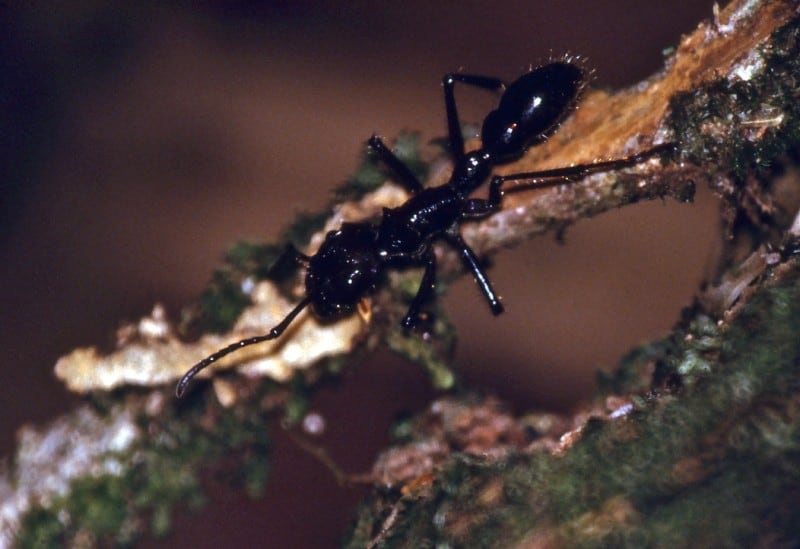Bullet Ant Facts
- The Bullet Ant forms a rather remarkable species of fairly large ant, commonly popular as the lesser giant hunting ant or conga ant.
- Further, its name, unfortunately, derives from reports concerning its rather powerful and quite potent sting.
- Interestingly, among the local inhabitants of its native range, the insect’s name also remains hormiga veinticuatro.
- Translated, this means 24-hour ant, which refers to the 24 hours of rather extreme pain that generally follow a sting.
- Finally, the species epithet clavata also means club-shaped.
Related Articles
Bullet Ant Physical Description
The powerful Bullet Ant ranks as a rather large variety of ant, like many of its related species. Workers also average around 0.7-1.3 in (18–30 mm) in length.
In appearance, these comparatively small, yet extremely powerful, invertebrates strongly resemble reddish-black, wingless wasps, with its coloring.
It also remains best known, in terms of physical appearance, at least, for its large, powerful pincers. With these, it easily defends itself and rends its prey.
- Kingdom: Animalia
- Phylum: Arthropoda
- Class: Insecta
- Order: Hymenoptera
- Family: Formicidae
- Genus: Paraponera
- Species: P. clavata
Bullet Ant Distribution, Habitat, and Ecology
Firstly, the fascinating Bullet Ant also evolved completely endemic to lowland rainforests and currently exists in a range from Nicaragua to the extreme east of the Honduras, and south to Paraguay, in South America.
Further, the insect appears to be fully predatory in nature. Just like other species of ants, it does not display any apparent degree of polymorphism within the worker caste. The queen also grows only slightly larger than the workers themselves.
Most notably, the extreme pain of the sting of this insect is generally considered to be greater than that of any other species of known insect. The pain is above that of even the tarantula hawk wasp whose name derives from the comparison of the pain to being shot with a bullet.
Most notably, the sting causes excruciating pain that continues unabated for up to 24 hours. The Bullet Ant has also apparently evolved its sting to ward off any predators that would normally prey upon them.
Finally, the powerful toxin is also currently under investigation for possible medical applications.
Species Sharing Its Range
Check out our other articles on 5 Magnificent Reptiles of Mexico, Fire Ant, Hot Water Beach, Rainbow Eucalyptus, Southern Darwin’s Frog, Spiny Butterfly Ray, Little Auk, Giant Girdled Lizard

